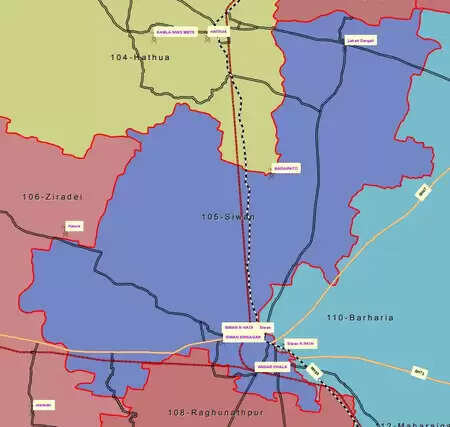Patna, October 12 (IANS). Siwan van Bihar is very important from historical, cultural and political point of view. This is the same land that India is his first president, Dr. Rajendra Prasad, gave. This area, drenched in the rich Bhojpuri culture, has left its deep end of India’s independence movement to modern politics. The history of Siwan is very old and delicious. It is said that the name Siwan is related to a Banda king named ‘Shiva Man’, whose descendants ruled the region until the arrival of Babur. At the same time, “Siwan” means in Bhojpuri language “border” or “border”. Since this area was near the southern border of Nepal, it was probably inspired by this and was called ‘Siwan’. Siwan is also rich in mythological and historical importance. The place ‘Don’ of Darauli area is said to be associated with Guru Dronacharya of Mahabharata. Here are many beliefs related to Buddha. It is said that a legend associated with the spread of the bones of the body of Lord Buddha is out of this area and that the famous Chinese traveler Hiuen Tsang also called Doan. In recent years, the idol of Lord Vishnu has found in the village of Bherbaniya that has proven the connection to this region with the Vaishnav tradition. Sivan’s contribution to the freedom movement is memorable. Great freedom fighters like Dr. Rajendra Prasad, Maulana Mazharul Haq, Braj Kishore Prasad, Mahendra Prasad and Syed Mohammed enjoyed the land of this region. Sadaqat Ashram, founded by Maulana Mazharul Haq, is still a symbol of common unity. Social movements such as Anti Purdah movement also began in Siwan. Many Siwan youths were tortured during the ‘Quit India Movement’. The administrative creation of modern Siwan took place in the 1970s. It was declared an independent district in 1972. Initially, 23 blocks from Gopalganj and Siwan were included. Later, Gopalganj was made a separate district. Currently, there are 21 blocks in the Siwan district, the most important blocks of Siwan, Maharajganj, Darauli, Hussainganj, Basantpur, Barharia, Jiradei, Hasanpura, Nautan and Lakdi Nabiganj. Geographically, Gopalganj is located in northern Siwan, Saran in the east, Deoria and Ballia districts Uttar Pradesh in the south and west. The fertile land and rivers like Ghaghra-Dah make it an agricultural area. The economy here is mainly based on agriculture. Paddy, wheat, maize, sugarcane and pulses are the most important crops. Here, traditional crafts such as earthenware, copper items and alloys called “Phhul” are also recognized here. Politically, the Siwan meeting constituency is part of Siwan Lok Sabha. It was founded in 1951 and is a general category seat. It contains eight grams of Panchayats from Siwan block (municipality included) and Barharia Block. So far elections have been held 18 times here, including the by-election of 1959. The political history of this seat was full of ups and downs. No party could make this seat its permanent fortress. In the election results so far, the Bharatiya Janata Party (BJP) has won the maximum number of times, seven of which were in the name of his predecessor Jan Sangh. The congress won four out of the five elections in the beginning phase, the last of which was in 1967. At the same time, Rashtriya Janata Dal (RJD) won three times, including the 2020 election. Janata Party and Janata Dal had success twice each. BJP’s three-backed finish line was broken in 2020 when RJD caught the seat. Caste comparison played a major role in Siwan’s politics. The balance of Yadav, Rajput, Brahmin, Bania and Dalit communities decides the election result. Muslims and business class also have an influence in urban areas, while Yadav and Rajput voters in rural areas play a decisive role. A mix of rural and urban voters is seen in the Siwan meeting constituency. According to the data from the Electoral Commission for 2024, the region has a total population of 5,39,380, which includes 2,78,697 men and 2,60,683 women. There are a total of 3,20,094 voters, of which 1,67,270 are men, 1,52,819 are women and 5 are third gender voters. -—IANS PSK/ABM
Bihar election: Siwan’s historical and cultural heritage, understand the comparison
